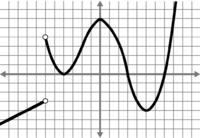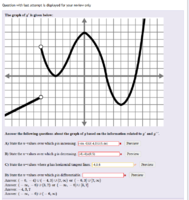
1.
A) State the x−values over which g is increasing.
B) State the x−values over which g is decreasing.
C) State the x−values where g has horizontal tangent lines.
D) State the x−values over which g is differentiable.
2.
A) State the x−values over which g′ is positive.
B) State the x−values over which g′ is negative.
C) State the x−values over which g′ is zero.
D) State the x−values over which g′ is undefined.
Can someone please explain to me what the difference is.


